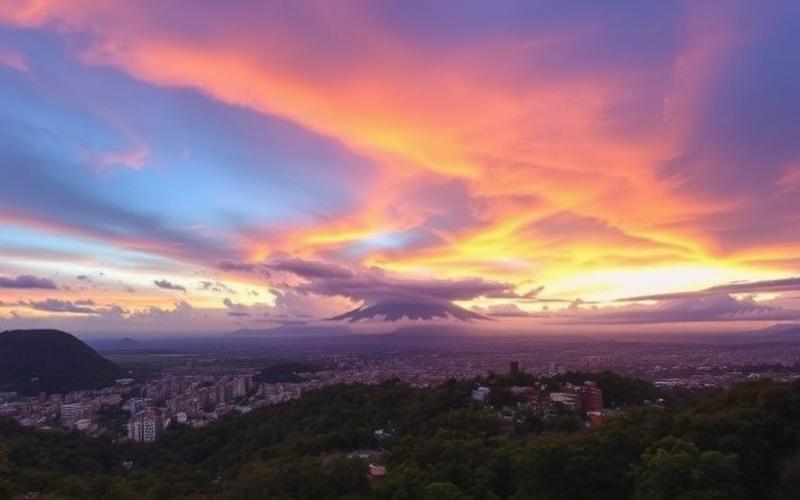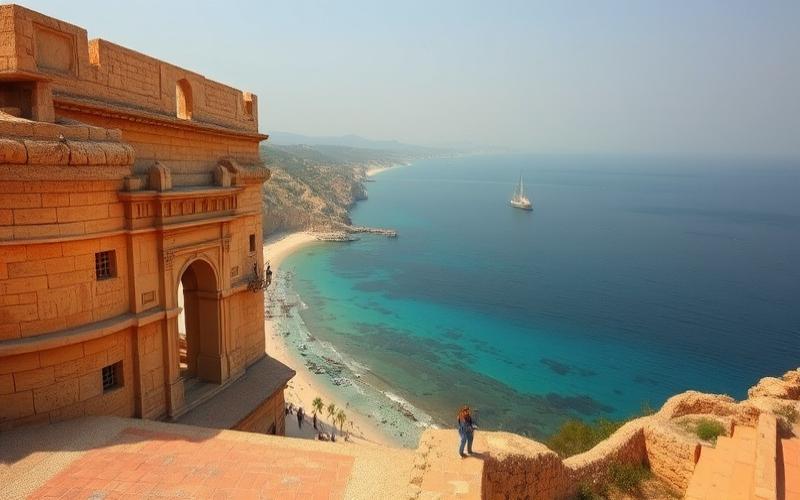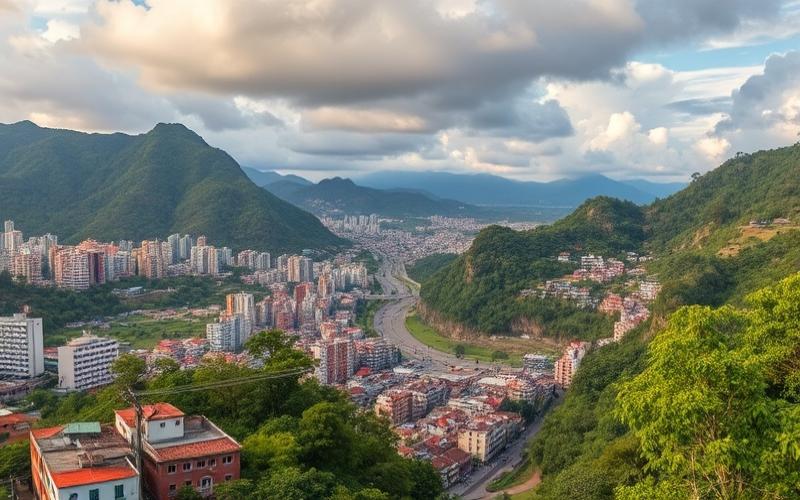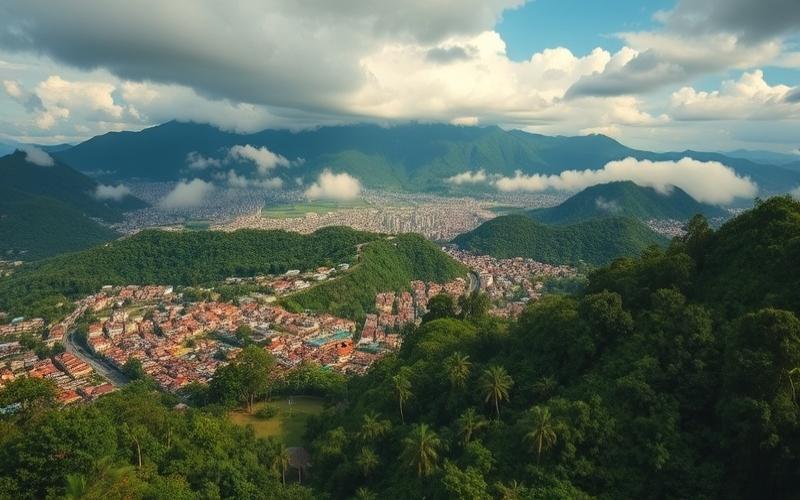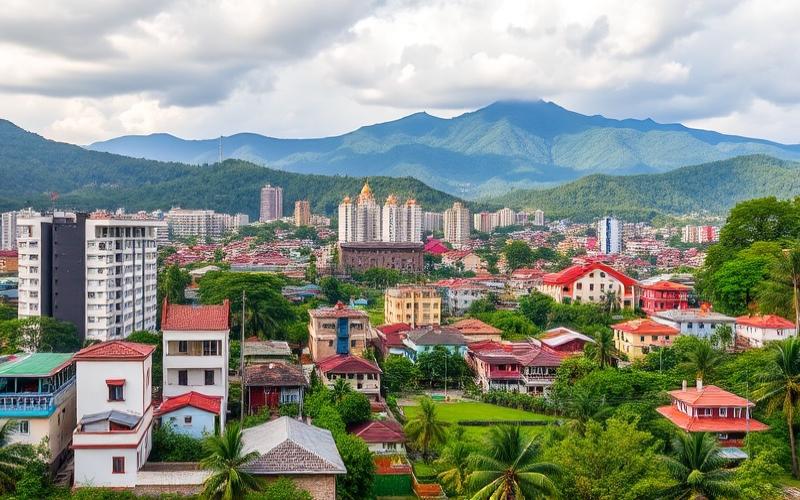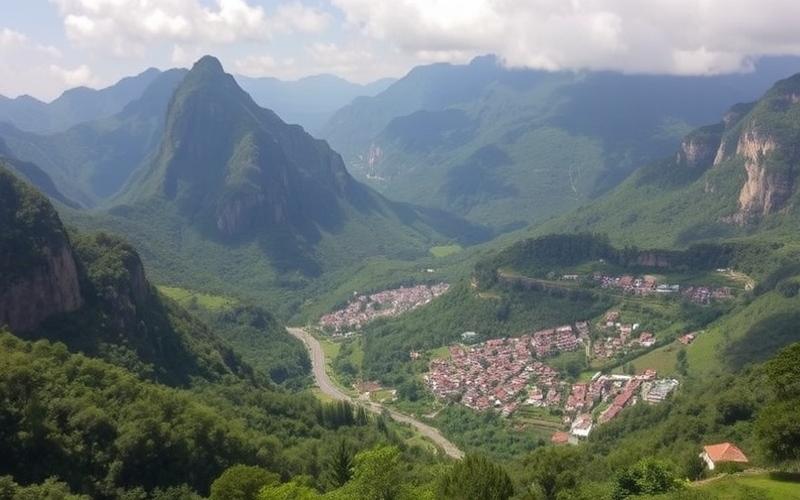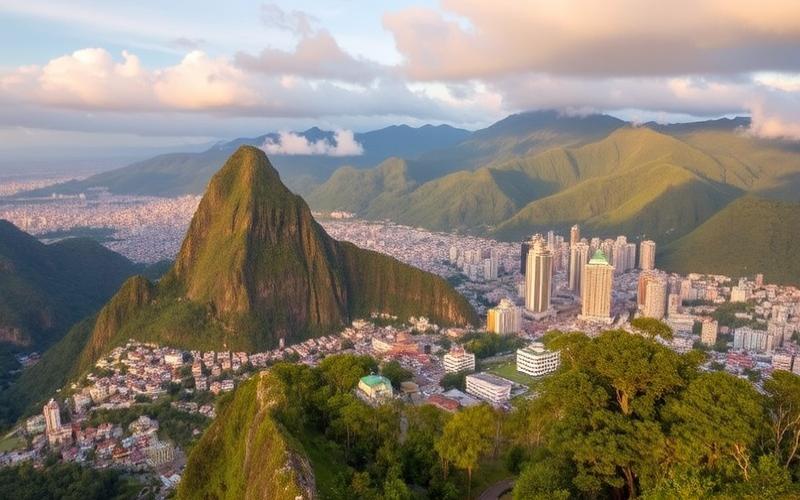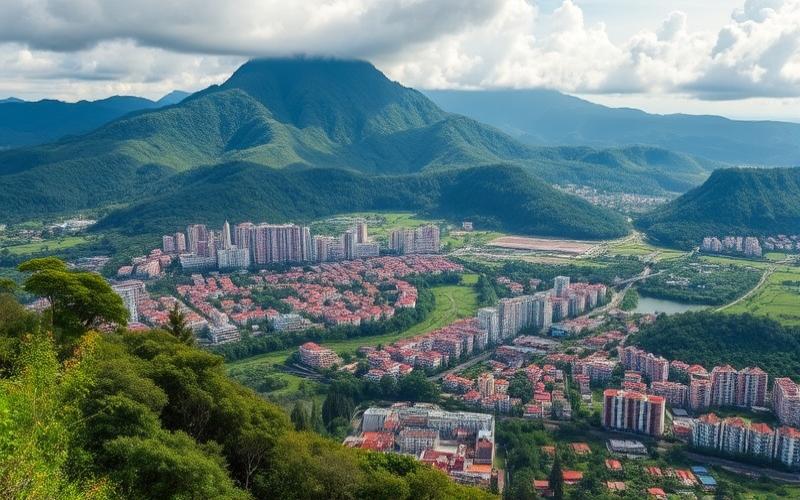
 Published on and written by Cyril Jarnias
Published on and written by Cyril Jarnias
In the vibrant, colorful whirlwind of Colombia, public transportation plays a fundamental role, connecting picturesque villages to bustling metropolises.
This practical guide accompanies you through the complex yet fascinating maze of bus, metro, and tram systems crisscrossing the country, revealing unique tips for navigating easily even during hectic rush hours.
Whether you’re a curious traveler or a resident looking to explore new routes, discover how to transform your daily commutes into rewarding adventures, while contributing to the region’s sustainable development.
Exploring Transportation Modes in Colombia
Colombia features a diverse transportation network that adapts to the needs of local and international travelers, with options ranging from economical buses to rapid domestic flights.
The bus is the most popular and economical means of transportation in the country. The intercity network is well-developed and organized, with modern, comfortable buses for long distances. This option not only saves money but also allows you to discover Colombian landscapes and make stops in small villages between major cities. Given Colombia’s vast distances, trips can be lengthy, but buses remain the least polluting alternative compared to airplanes.
For urban travel, several systems coexist depending on the city. In Bogotá, the TransMilenio operates as a surface metro with dedicated lanes that avoid the capital’s traffic jams. The system uses a rechargeable card costing 3,000 COP, with a per-trip fare of 2,200 COP. Be aware, however: during rush hour, the TransMilenio is completely saturated, making it difficult to board the first bus.
Medellín stands out as the only Colombian city with a metro, a modern, clean, and efficient system that’s part of a comprehensive transportation network including cable cars, trams, and buses. The free rechargeable Civica card can be obtained with a passport at the San Antonio station. The fare is 2,000 COP with the card for all transportation, or 2,300 COP for a single trip valid only for the metro and tram.
Busetas and collectivos represent the most widely used public transportation system by city dwellers. These small buses of varying sizes operate simply: raise your hand to stop the bus, tell the driver your destination who confirms if they’re heading that way, then board paying approximately 2,000 COP in cash. Don’t hesitate to regularly remind the driver of your destination to ensure they drop you off at the right spot.
| Transport Type | Average Cost | Availability | Features |
|---|---|---|---|
| Intercity Bus | Least expensive | Nationwide | Modern and comfortable |
| TransMilenio (Bogotá) | 2,200 COP/trip | Bogotá only | Dedicated lanes, saturated during rush hour |
| Metro (Medellín) | 2,000-2,300 COP | Medellín only | Interconnected with cable cars and tram |
| Buseta/Collectivo | 2,000 COP | All cities | Cash payment to driver |
| Taxi airport-downtown Bogotá | 25,000-40,000 COP | Main airport | Metered fare |
Taxis are widely available in Colombian cities. Always ensure the meter (taxímetro) is running or agree on a fare before departure. For a trip between Bogotá’s El Dorado International Airport and downtown, expect to pay between 25,000 and 40,000 COP depending on time, traffic conditions, and exact destination. Ride-hailing apps like Uber are available but officially illegal, which may cause some inconveniences.
Domestic air travel is well-developed between major Colombian cities. The main airlines are Avianca, LATAM, and Clic Air (formerly EasyFly). This option sometimes proves necessary to reach isolated regions, especially since some routes offer attractive fares. However, airplanes remain more polluting than buses and don’t allow you to enjoy the scenery.
For those wanting more freedom, car rental offers maximum flexibility. However, rental costs in Colombia aren’t much cheaper than in Europe, and driving on Colombian roads requires some experience.
In coastal or island regions, boats and ferries become essential for getting around. In rural areas and small towns, you’ll also find tuk-tuks and motorcycle taxis that serve as practical alternatives.
Practical Tips for Travelers
Choose buses if you have time and want to minimize your carbon footprint while discovering the country at a slower pace. Carefully plan your itinerary to avoid unnecessary flights. For urban travel, always carry change for busetas. Obtain rechargeable transportation cards upon arrival in major cities to facilitate your movements. Regarding taxis, prefer those with meters and verify they’re activated. Finally, keep in mind that bus terminals are generally located in city centers, providing easy access.
Good to Know:
The TransMilenio in Bogotá is fast but packed during rush hour, while taxis are affordable but check fares in advance and prefer apps for greater safety; for intercity trips, long-distance buses are widespread and less expensive than planes, though slower.
Budget Planning: How Much Does Public Transportation Cost for an Expat in Colombia?
Available Public Transportation in Colombia
In Colombia, the main urban transportation modes are:
- Local Buses: Present in all cities, they operate with classic routes or as articulated buses (BRT systems).
- TransMilenio in Bogotá: Bus rapid transit (BRT) network considered one of the most important in the country.
- Medellín Metro: Unique metro network in Colombia, complemented by an urban cable car system (Metrocable) and tram.
- BRT Systems in Other Cities: Cali (MIO), Barranquilla (Transmetro), Bucaramanga (Metrolínea), Cartagena (Transcaribe), Pereira (Megabús).
| City | Main Modes | Specific System |
|---|---|---|
| Bogotá | Local buses, BRT | TransMilenio |
| Medellín | Metro, Metrocable, Tram | Medellín Metro |
| Cali | BRT, local buses | MIO |
| Barranquilla | BRT, local buses | Transmetro |
| Bucaramanga | BRT, local buses | Metrolínea |
| Cartagena | BRT, local buses | Transcaribe |
| Pereira | BRT, local buses | Megabús |
Average Fares and Subscriptions
- Local Buses: Between 2,500 and 3,000 COP per trip depending on the city.
- TransMilenio (Bogotá): 2,950 COP per single trip (2024).
- Medellín Metro: 3,100 COP for individual ticket, reduced fares for students and seniors.
- BRT in Other Cities: From 2,700 to 3,200 COP depending on distance and city.
Subscriptions and Special Rates:
- Monthly subscriptions or prepaid cards are available in several cities (e.g., TuLlave card in Bogotá, Cívica card in Medellín).
- No special rates for expats, but reduced fares for students, seniors, or people with reduced mobility.
- Monthly subscriptions offer savings for regular users, with spending caps in some cities.
Regional Price Variations
Fares vary depending on:
- The city (for example, Medellín is slightly more expensive than Bogotá).
- The type of service (metro often more expensive than classic bus).
- The distance traveled in some networks (zonal or kilometer-based pricing, as in Bucaramanga).
Practical Tips to Save Money
- Purchase a prepaid transportation card (TuLlave, Cívica, etc.) to avoid paying full price for each trip.
- Take advantage of weekly or monthly passes if you make daily trips.
- Look for discounts for frequent trips, especially for students or seniors.
- Prefer trips outside rush hours for more comfort, even though the fare remains the same.
Mobile Apps and Payment Methods
- Official network apps (TransMilenio, Metro de Medellín) to plan trips, check schedules, and recharge your card.
- Third-party apps: Moovit, Google Maps, Transit App.
- Payment: Mainly via rechargeable transportation card; cash payment possible in traditional local buses, but rare on modern networks.
Expat Testimonials on Expenses
- Average Monthly Budget for an expat using public transportation daily: between 80,000 and 150,000 COP depending on the city and frequency.
- Many expats report the system is economical compared to Europe, but service quality and punctuality vary greatly between cities.
- Several emphasize the importance of prepaid cards to avoid lines and benefit from all transfer options.
To plan your transportation budget in Colombia, it’s recommended to consult official network websites, opt for a rechargeable card upon arrival, and use local mobile apps to optimize your travels and expenses.
Good to Know:
In Colombia, an expat can expect to pay around 2,500 COP for a local bus trip and 2,800 COP for the TransMilenio in Bogotá or Medellín metro, with monthly subscription options available to reduce costs. Using prepaid cards and mobile apps facilitates travel while often offering discounts, as illustrated by an expat’s experience saving 20% on trips by purchasing a rechargeable card.
Practical Tips for Efficiently Using Public Transportation in Colombia
Available Transportation Types
- Urban and intercity buses (buseta, colectivo, long-distance bus)
- Metro (Medellín only)
- Regular taxis and shared taxis (colectivos)
- Motocarros (tuk-tuks, mainly in small towns)
- Chivas (traditional festive buses, often for excursions)
- Lanchas (boats for certain river or coastal regions)
| City | Metro | Urban Bus | Intercity Bus | Taxi/Colectivo | Motocarro/Chiva | Other |
|---|---|---|---|---|---|---|
| Bogotá | No | Yes | Yes | Yes | No | Transmilenio |
| Medellín | Yes | Yes | Yes | Yes | Yes (outskirts) | Tram, cable car |
| Cali | No | Yes | Yes | Yes | Yes (outskirts) | MIO (articulated buses) |
Typical Service Hours
- Urban buses: generally from 4:30/5:00 AM to 10:00/11:00 PM (depending on city and line)
- Medellín Metro: from 4:30 AM to 11:00 PM, high frequency during daytime
- Intercity buses: departures throughout the day and often overnight for long distances
- Taxis and motorcycle taxis: 24/7 in major cities
Ticket Purchase Methods
- Prepaid cards (Civica in Medellín, Transmilenio card in Bogotá, MIO card in Cali)
- Cash payment directly to driver (buseta, colectivo, motocarro)
- Mobile payment (some companies offer apps or QR codes)
- Online or agency purchase for long-distance buses (sites like RedBus, Busbud)
Useful Apps for Trip Planning
- Moovit: real-time planning in major cities
- TransMiApp: information on Transmilenio network (Bogotá)
- Metro de Medellín: metro schedules and map
- Google Maps: basic public transportation information
- RedBus, Busbud: intercity bus ticket purchases
Safety Standards to Follow
- Always use official taxis (ask your hotel or use apps like Tappsi or EasyTaxi)
- Keep valuables out of sight on buses and metros
- Prefer daytime hours for intercity trips
- Beware of pickpockets, especially in crowded areas and packed transportation
- Check the destination and bus number before boarding
Tips to Avoid Rush Hour and High-Traffic Areas
- Travel before 7:00 AM or after 9:30 AM in the morning, and between 3:00 PM and 5:00 PM or after 7:00 PM in the evening
- Avoid transportation terminals and major metro/bus stations during these hours
- Prefer less central lines or alternative routes
- In Bogotá, avoid Transmilenio between 6:30-9:00 AM and 5:00-7:00 PM
- In Medellín, the metro is saturated between 7:00-8:30 AM and 5:00-7:00 PM
Cultural Behaviors or Local Habits
- Board at the front, exit at the rear on urban buses
- Greet the driver and passengers upon entry (especially in small buses or colectivos)
- Respect the line, but expect some disorder during rush hour
- Help or give up your seat to elderly people, pregnant women, and people with reduced mobility
- Carry change (small bills or coins) to pay for buses or taxis
- In intercity buses, music may be loud and the atmosphere friendly
Accessibility and Adapted Services
- Medellín Metro: wheelchair-accessible access, elevators in main stations
- Transmilenio (Bogotá): dedicated spaces in buses, ramps in some stations
- MIO (Cali): accessible articulated buses, stations with ramps
- Adapted taxis available on request in major cities
- Prefer major bus companies for intercity trips (better comfort and accessibility)
Specific Examples by City
- Bogotá: Transmilenio with rechargeable card, buseta paid in cash, official taxis recommended, Moovit and TransMiApp useful for planning
- Medellín: metro with free Civica card, tram and cable car, complementary urban buses, Metro de Medellín app for schedules
- Cali: MIO network with rechargeable card, urban buses and colectivos, RedBus or Busbud for intercity trips, taxis and motocarros in certain neighborhoods
Practical Tips for People with Reduced Mobility
- Check station and stop accessibility before traveling
- Contact bus companies to reserve assistance
- Use dedicated services in metros and articulated buses in major cities
Key Takeaways
To travel peacefully in Colombia, plan your trips with local apps, avoid rush hours, keep your belongings secure, and adapt to small local habits for an authentic and enjoyable experience.
Good to Know:
In Bogotá, use the prepaid “TuLlave” card for easy access to buses and TransMilenio, while in Medellín, the “Moovit” app facilitates metro trip planning; avoid early morning and late afternoon rush hours for a more comfortable journey.
Disclaimer: The information provided on this website is for informational purposes only and does not constitute financial, legal, or professional advice. We encourage you to consult qualified experts before making any investment, real estate, or expatriation decisions. Although we strive to maintain up-to-date and accurate information, we do not guarantee the completeness, accuracy, or timeliness of the proposed content. As investment and expatriation involve risks, we disclaim any liability for potential losses or damages arising from the use of this site. Your use of this site confirms your acceptance of these terms and your understanding of the associated risks.



